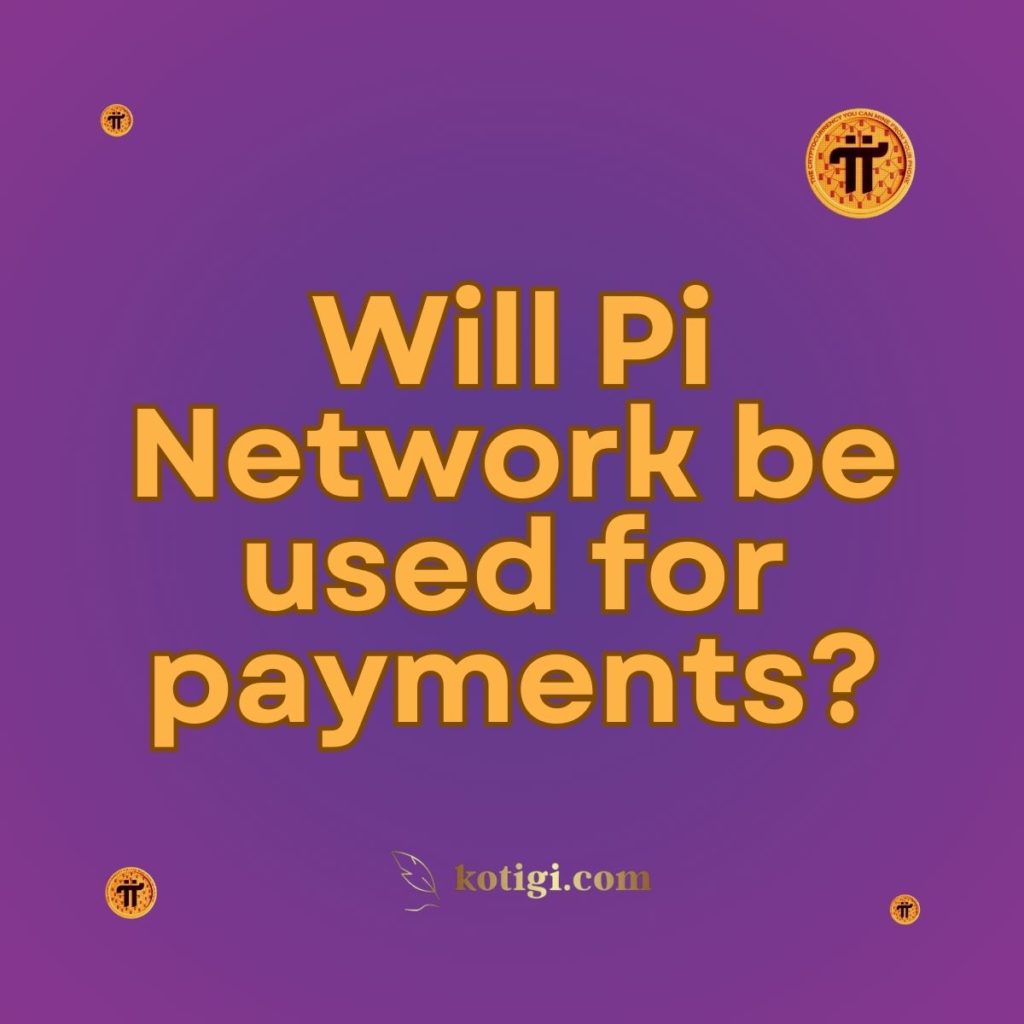
Will Pi Network be used for payments?
Yes, Pi Network is designed with the goal of being used for payments, both within its ecosystem and potentially beyond. As the project evolves, the use of Pi as a medium of exchange is a key component of its vision. Here’s how Pi Network plans to facilitate payments:
1. In-App Transactions
1.1. Peer-to-Peer Payments:
One of the primary uses of Pi within the Pi Network ecosystem is for peer-to-peer (P2P) transactions. Users can send and receive Pi directly from one another through the Pi Network app, making it a convenient tool for transferring value among participants. This feature is already active in the testnet phase, where users can practice sending Pi to each other, preparing for real-world transactions once the mainnet is live.
1.2. Microtransactions:
Pi Network aims to enable microtransactions, where users can make small payments without the high fees often associated with traditional payment methods. This could be particularly useful for purchasing digital goods, tipping content creators, or participating in online games and services.
2. Merchant Integration
2.1. Marketplace for Goods and Services:
After the mainnet launch, Pi Network plans to expand its utility by integrating with merchants who accept Pi as a form of payment. This could include online retailers, local businesses, and service providers who see value in accepting cryptocurrency. A dedicated marketplace within the Pi app or through partnered platforms could allow users to spend their Pi on a variety of goods and services.
2.2. E-Commerce and Digital Services:
In addition to physical goods, Pi could be used to pay for digital services, such as subscriptions, software, or content streaming. By partnering with e-commerce platforms and service providers, Pi Network hopes to establish itself as a viable payment option in the digital economy.
3. Global Remittances
3.1. Cross-Border Payments:
Pi Network has the potential to be used for cross-border payments, offering a faster and cheaper alternative to traditional remittance services. Given its mobile-first approach, Pi could be especially beneficial in regions where access to banking services is limited, providing an easy way to send money internationally without the need for traditional financial intermediaries.
3.2. Financial Inclusion:
By enabling payments through a decentralized network, Pi Network could contribute to financial inclusion, particularly in developing countries. Users who lack access to traditional banking could use Pi as a digital currency for everyday transactions, helping to bridge the gap between the unbanked and the global economy.
4. Integration with Other Cryptocurrencies
4.1. Exchange and Conversion:
Once Pi is listed on cryptocurrency exchanges, it could be easily converted to other cryptocurrencies, such as Bitcoin or Ethereum, and then used for payments wherever those currencies are accepted. This integration could broaden the payment options available to Pi holders, allowing them to participate in the larger cryptocurrency ecosystem.
4.2. Multi-Currency Wallets:
Pi Network might eventually support multi-currency wallets, enabling users to hold and use Pi alongside other cryptocurrencies. This feature would allow for seamless payments across different digital assets, increasing the flexibility and convenience of using Pi for transactions.
5. Decentralized Finance (DeFi) and Smart Contracts
5.1. DeFi Payments:
As Pi Network grows, it could integrate with decentralized finance (DeFi) platforms, enabling users to make payments within DeFi applications. This could include lending, borrowing, or staking Pi in decentralized protocols, further expanding its use cases in the financial sector.
5.2. Smart Contract Payments:
In the future, Pi Network might support smart contracts, allowing for automated payments based on predefined conditions. For example, Pi could be used in automated escrow services, where funds are released upon the fulfillment of contractual terms, enhancing trust and reducing transaction risks.
Conclusion
Pi Network is designed with the intention of becoming a widely accepted payment method. From peer-to-peer transactions to merchant integration and cross-border payments, Pi aims to provide a versatile and accessible digital currency for a wide range of uses. As the network transitions to the mainnet and the ecosystem develops, Pi’s potential as a payment solution will likely grow, offering users more ways to spend and transact with their Pi coins.





